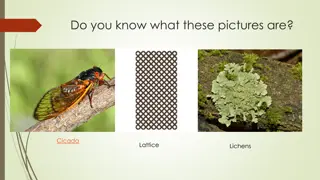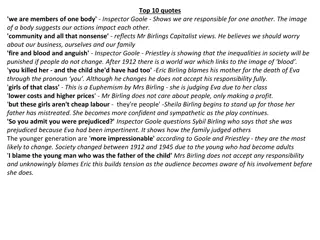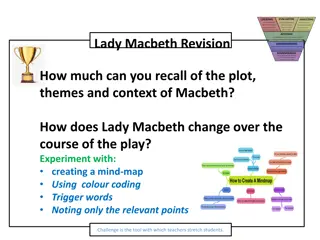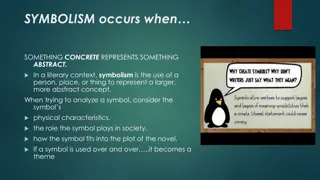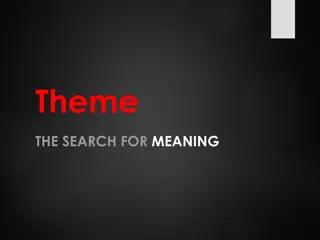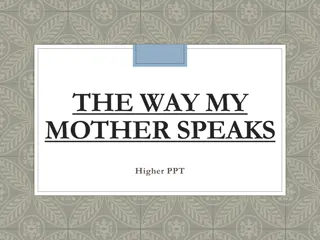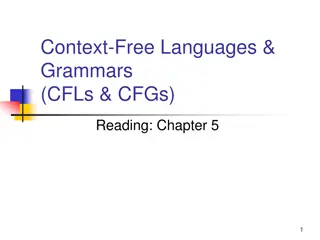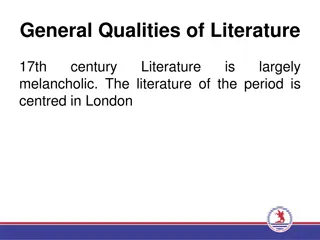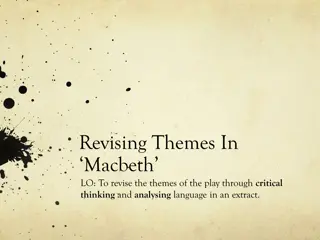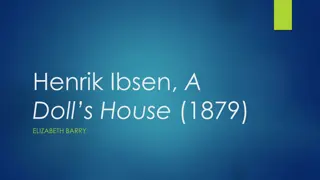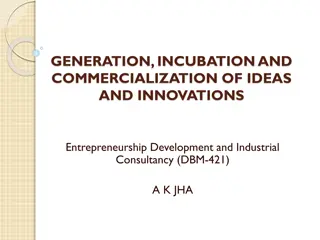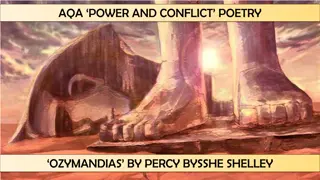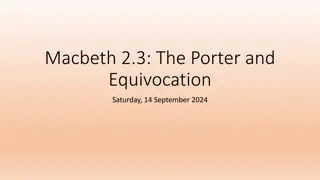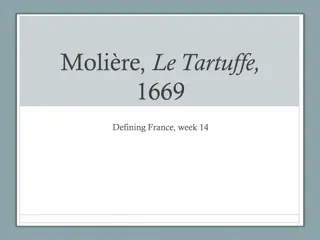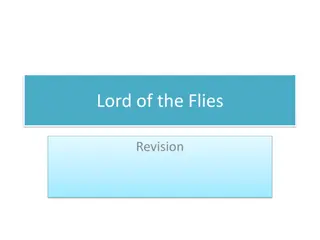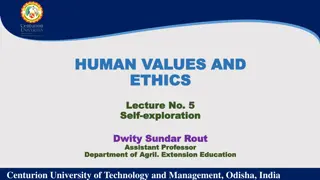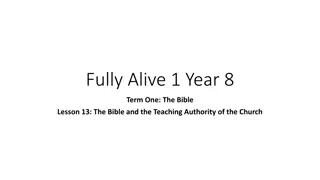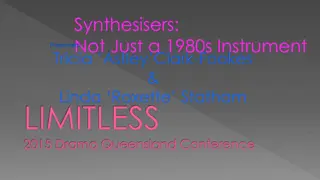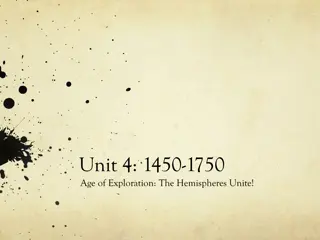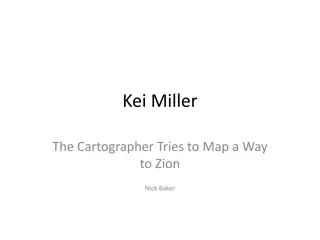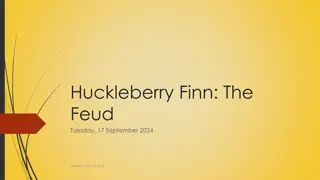Understanding Steinbeck's Exploration of Context Through Themes and Ideas
Steinbeck delves into the historical context of the Great Depression and the American Dream in "Of Mice and Men". He explores themes such as dreams, ambition, loneliness, violence, and social status, shedding light on different perspectives of American society during that era.
Download Presentation

Please find below an Image/Link to download the presentation.
The content on the website is provided AS IS for your information and personal use only. It may not be sold, licensed, or shared on other websites without obtaining consent from the author. Download presentation by click this link. If you encounter any issues during the download, it is possible that the publisher has removed the file from their server.
E N D
Presentation Transcript
OMM: Themes and Context L/O: How does Steinbeck explore the context through themes and ideas? QUICK REVISION QUIZ you can use the information given to you to help you. 1. The American Dream was an idea created in which famous document? 2. What was The Great Depression ? 3. What caused the dust bowl in 1931? 4. From which poet did Steinbeck borrow the title? 5. What is the meaning of the title?
OMM: Themes and Context L/O: How does Steinbeck explore the context through themes and ideas? QUICK REVISION QUIZ 1. The American Dream was an idea created in which famous document? The Declaration of Independence What was The Great Depression ? Aftermath of the stock market crash, mass unemployment and fall in the economy What caused the dust bowl in 1931? Erosion and agriculture From which poet did Steinbeck borrow the title? Robert Burns What is the meaning of the title? No matter how hard we try, plans often go wrong. 2. 3. 4. 5.
L/O: How does Steinbeck explore the context through themes and ideas? In order to understand the context and how it influenced Steinbeck, we need to consider how the themes and ideas relate to the world around him and his characters. In order to do this, you will need to really thinking imaginatively about the text and interpret meaning from every page you read.
L/O: How does Steinbeck explore the context through themes and ideas? Dreams and ambition Lennie and George dream of freedom and a better life on the farm S&H context The American Dream Migrant workers The Great Depression Curley s wife dreams of being an actress View of women in the 1930 s- no voice Femininity, sexuality and exploitation The birth of Hollywood
Themes Context Notes Dreams and Ambition Loneliness Violence and aggression Social status and power Friendship
Vision of America This novella seems to argue that there is no one single America. Rather, there are many groups (blacks, workers, women, others) each with their own struggle. Linked to this idea is its setting in rural America, mid way through the great depression and encompassing the Dust bowl.
Anyone can achieve wealth and success if they work hard. The American Dream
http://madmikesamerica.com/wp-content/plugins/wp-mobile-detector/timthumb.php?src=%2Fwp-content%2Fuploads%2F2010%2F06%2Fracist-ad.jpgw=250http://madmikesamerica.com/wp-content/plugins/wp-mobile-detector/timthumb.php?src=%2Fwp-content%2Fuploads%2F2010%2F06%2Fracist-ad.jpgw=250 Racism
This image represents... Loneliness
Uselessness of the old!
Themes Loneliness Dreams The working man Disadvantaged characters (misfits) Prejudice Friendship
Dreams Repetition of farm dream makes it seem more real as novel progresses (until final events) CHAPTER 1 Used as sign of hope. CHAPTER 6 Used differently used to comfort Lennie before George kills him. The last mention of the dream is very poignant as both the reader and George know that the dream will never be achieved. CIRCULAR PLOT used to emphasise that life will never change for these characters. The dream is used by Steinbeck to show a different side to Candy and Crooks. Dream is shattered in by Curley s wife in two ways: Mocking Crooks bindlebums Getting killed by Lennie. Curley s wife had her own dreams of being in films.
Isolation and loneliness SETTINGS play big part in portraying isolation ranch Soledad = Spanish for solitude Characters are discriminated against for different reasons. Although most of them suffer discrimination, the characters don t have much in common and remain quite isolated throughout the book (dream brings them together): Crooks Because he is black Curley s wife Because she is a woman and seen as trouble and Curley s possession. Candy Because of his disability. Candy s dog old and smells. Crooks is an important character when exploring isolation he uses his own room as a retreat and rarely allows other people to enter his room very protective over his small space. This shows that even though he doesn t own much, he is a very proud character; This is also why he retreats back into his shell when challenged and mocked by Curley s wife. George ends up alone at the end links to circular plot.
Settings Contrasts between Chapter 1 and 6 circular plot - isolation Weed foreshadowing Barn location for a lot of negative events Puppy dies Curley s wife dies Curley s hand crushed Ranch = isolated Soledad = solitude Crooks room books shows intelligence / proud Detailed descriptions of settings to reflect events
Relationships GEORGE AND LENNIE: Strength (physical Lennie alongside Mental George) Friends (George takes responsibility for Lennie) Father and Son (George protective / Lennie childlike) Pet and Master (Animal imagery) MASTER AND PET: Lennie and Mice Lennie and Puppy Candy and Dog George and Lennie CROOKS AND LENNIE / CURLEY S WIFE AND LENNIE: Both characters open up to Lennie reveals more to the reader (Lennie is almost used as a journal / diary). CURLEY AND HIS WIFE: Not a loving relationship Wife treated as a possession doesn t even have a name in the book. Even at the end, Curley wants revenge for Lennie crushing his hand. This will shock the reader as he should want justice for his dead wife. Wife s unhappiness shown throughout the novel flirting with other men, lost dreams etc
Foreshadowing (Hints at what might happen later in the plot): Title of novel The best laid plans of mice and men often go awry Woman in weed George s constant warnings to Lennie to keep away from Curley s wife Candy s dog Repetition of run to the brush Dead animals Structure uplifting events are quickly followed by something bad (this occurs throughout the novel) Lennie s strength dead animals won t let go of Curley s hand
Comparing Section one and six ANIMAL IMAGERY: Lennie like a bear drags his paws Lennie dabbled his big paw in the water Section 1 Energetic wild animal hunted animal came as silently as a creeping bear moves Strong Characteristics are more cautious Clumsy Reader s sympathy grows towards him Section 6 Lennie is like a further Death of animals Candy s dog / Mice / Puppies: Hints (foreshadowing) that George s pet (Lennie) must die too? DIGNITY AND RESPONSIBILITY Candy wishes he had shot his dog
REPETITION OF FARM STORY: Section 1 represents hope and dreams when Lennie and George are discussing the farm. Whereas: In Chapter 6, George uses the farm to comfort Lennie. Very poignant and emotive George and the reader know that the dream will never come true. The reader empathises with George s situation and decision. The sadness surrounding the death of Lennie and the dream is furthered because the reader is aware that the dream was about to come a reality with the help from Candy. CIRCULAR PLOT: Novel starts and ends in the same setting brush This emphasises that no matter what dreams they have, the ranch workers are destined to just move round from ranch to ranch until they eventually die Reader feels increasing sympathy for these helpless and isolated characters.
SETTING: HERON AND WILDLIFE Same setting in chapter 1 and 6 chapter 6 is written with a more negative perspective Metaphor for Lennie s life - close to end? CHAPTER 1: peaceful twinkling over yellow sands CHAPTER 6: Sense of peace from chapter 1 turns to isolation: the golden foothill slopes Sun had left the valley Still late in the afternoon Lennie is in the middle of the setting in a vulnerable childlike position: he embraced his knees and laid his chin down on his knees builds sympathy for character HERON Chapter 1 Heron spares snake s life Reflected - George saves Lennie s life by helping him escape Weed. Chapter 6 - Heron stands motionless in the water then kills the snake Shows smarter animal killing helpless animal FORESHADOWING George and Lennie Circle of life / nature
HOMELEARNING PART B: How does Steinbeck use the relationship between George and Lennie to explore the social and historical context of the novella? What their relationship represents in the novella Life in the 1930 s The theme of dreams and ambition





